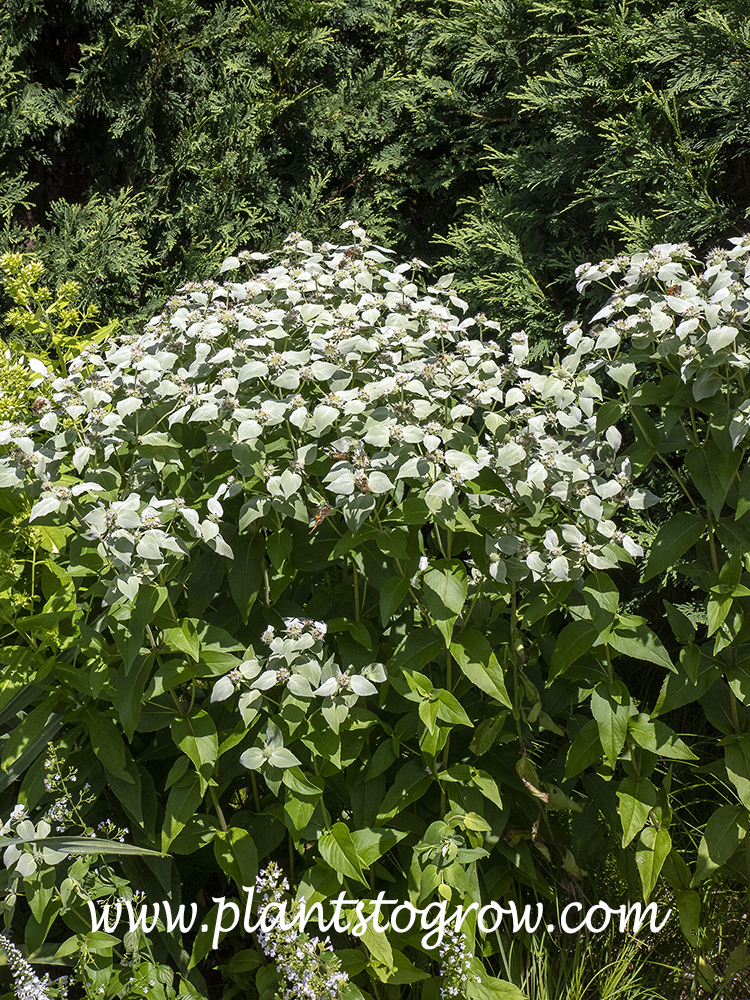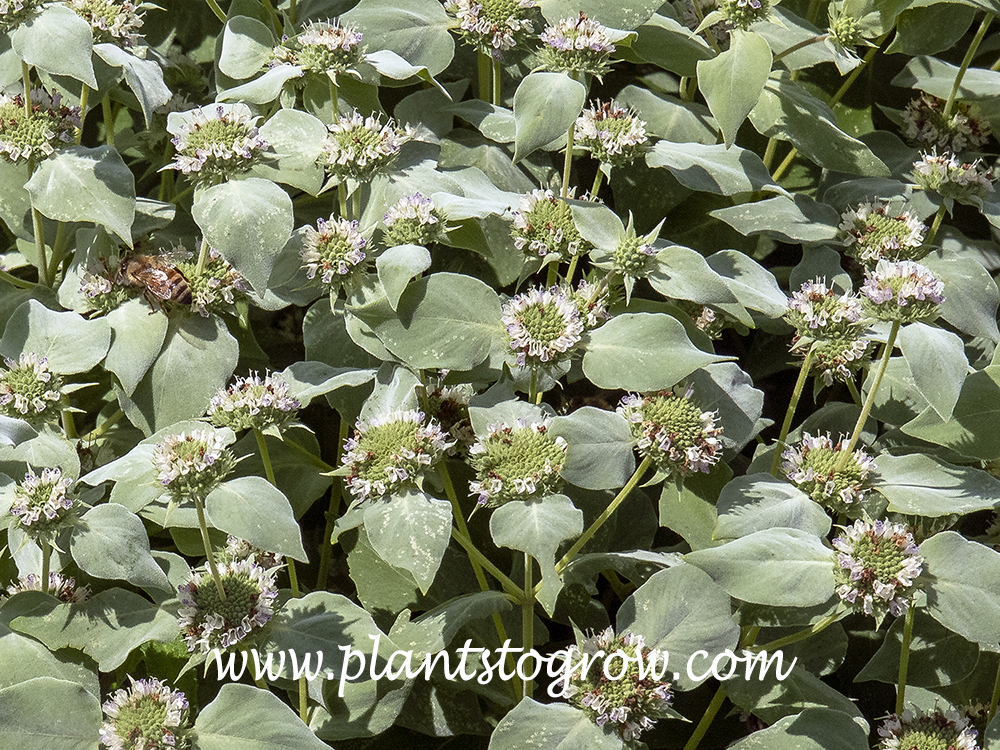| Description | Blunt Mountain Mint (Pycnanthemum muticum) |
|---|---|
| Pronunciation | (pink-nan-THE-mum) |
| Plant Type | Perennials Hardy, Wild Flowers |
| Hardiness Zone | 4-8 |
| Sunlight | full, mostly sunny, some shade |
| Moisture | average, moist to medium, tolerates drought |
| Soil & Site | well-drained |
| Flowers | small pinkish-to-white, powdery white-to-silver bracts that give plants the appearance of being dusted by snow, July-September, a magnet for pollinators |
| Leaves | dark green, strong mint-like scent |
| Stems | square stems typical of the family, underground rhizomes |
| Dimensions | 3 by 3 feet (HS), clumping |
| Maintenance | spreads by rhizomes but can easily be controlled by digging rhizomes out from the edge |
| Propagation | seeds or easy by division |
| Native Site | Eastern North America from Maine to Michigan to Illinois and south to Florida and Texas. |
| Misc Facts | Genus name comes from Greek pyknos meaning dense and anthos meaning flower for its densely packed flowers. Genus comes from the Latin word muticus meaning blunt. AKA: mountain mint, short-toothed mountain mint, clustered mountain mint |
| Author's Notes | I first observed this plant in a phenomenal white garden in early August. The plants were buzing with pollinators |
| Notes & Reference | #04-Herbaceous Perennial Plants (Allan Armitage), #144-Missouri Botanical Gardens web site (www.missouribotanicalgarden.org), #203-North Creek Nursery (www.northcreeknurseries.com) |

Cart




